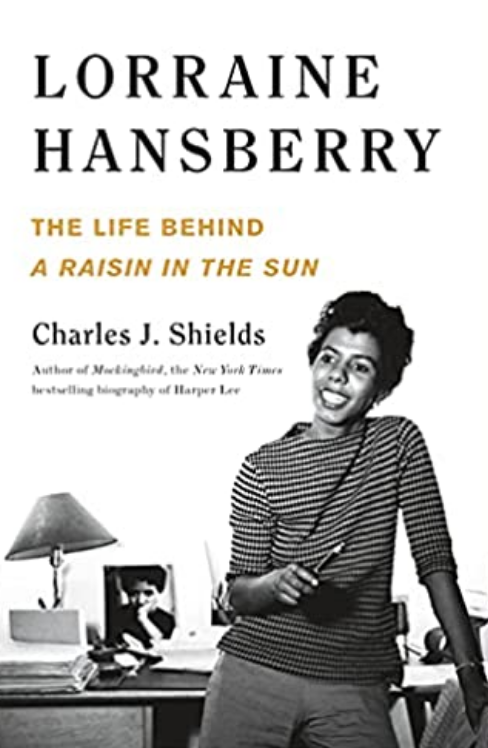5 HOT BOOKS: A Lorraine Hansberry Biography, a Diary of the Plague Year 2020, and More
/1. Lorraine Hansberry: The Life Behind A Raisin in the Sun by Charles J. Shields (Henry Holt)
In his engrossing biography, Shields provides a contextualized portrait of Hansberry, the first Black woman to write a play staged on Broadway. Previously writing about Harper Lee and Kurt Vonnegut, Shields has a knack for illuminating the lives of writers, and through his deep research, how Hansberry’s play about a Black Chicago family in the 1950s is so resonant today. He captures Hansberry in her full complexity: Her own family’s affluence and elite status could not shield her from racism, and her father was a slumlord taking advantage of poor Black tenants. She enjoyed material advantages yet embraced socialism and had a vision for female equality, and while she died in her mid-30s, she lived long enough for Hoover’s FBI to amass a 1,000-page dossier about her.
2. A Diary of the Plague Year: An Illustrated Chronicle of 2020 by Elise Engler (Metropolitan Books)
Engler painted the day’s headlines from the news emitted from her bedside radio every morning for a year, beginning Jan. 20, 2020, and it became a visual register of “fecklessness, devastation, rage, injustice, illness, and death.” In electric, dynamic painting, and distinctive handwritten text, this diary is animated by Engler’s creative, associative mind that magically portrays not only the pandemic’s science wars and two Trump impeachments but, beyond politics, the death of Kobe Bryant, California wildfires, and the sentencing of Harvey Weinstein. Engler captures the urgency of the summer’s protests after the murder of George Floyd, and her portraits of players in the national drama, from Kushner and McConnell to Fauci and Biden, seem at once intimate yet kaleidoscopic.
3. Sweat: A History of Exercise by Bill Hayes (Bloomsbury)
Hayes blends science, travel, history, and memoir into a thoroughly engaging, and idiosyncratic, narrative inquiry into “exercise,” a term originating in the 14th century meaning “to remove restraint.” Fads like SoulCycle or CrossFit don’t interest Hayes; he’s drawn to Renaissance physician Girolamo Mercuriale and his 1573 book, The Art of Gymnastics. Hayes writes with panache as he crosses three continents in search of fitness routines past and present, from fencing to Jane Fonda: “Libraries, like gyms, have always been a refuge for me, just as gyms, like libraries, have always been places of learning.”
4. To Paradise by Hanya Yanagihara (Doubleday)
Yanagihara’s highly anticipated follow-up to her bestselling A Little Life is an ambitious novel, intricately imagined epics that move through three centuries – 1893, 1993, and 2093 – hinged together by a Greenwich Village townhouse on Washington Square. Same-sex marriage is allowed but Blacks barred from society allowed, a descendant of a Hawaiian monarch witnesses AIDS destroy a generation and see his heritage threatened, and finally storms and a pandemic rage as an authoritarian regime reigns. Society is bleak indeed, but the possibility of human connection and affection endures in this compelling novel.
5. The School for Good Mothers by Jessamine Chan (Simon & Schuster)
Chan’s sharp, absorbing debut novel has become the book club rage, optioned for a TV series by Jessica Chastain’s production company, a found an audience receptive the oppressive demands of marriage and motherhood. Frida Liu leaves her 18-month-old daughter home alone in an ExerSaucer and is sentenced by a judge to a year in a sort of prison rehab program for bad mothers. Evoking The Handmaid’s Tale with a dab of Orange Is the New Black, Chan’s drama deftly contends with the oppression of mother-shame and guilt, particularly when it is imposed on mothers of color.










